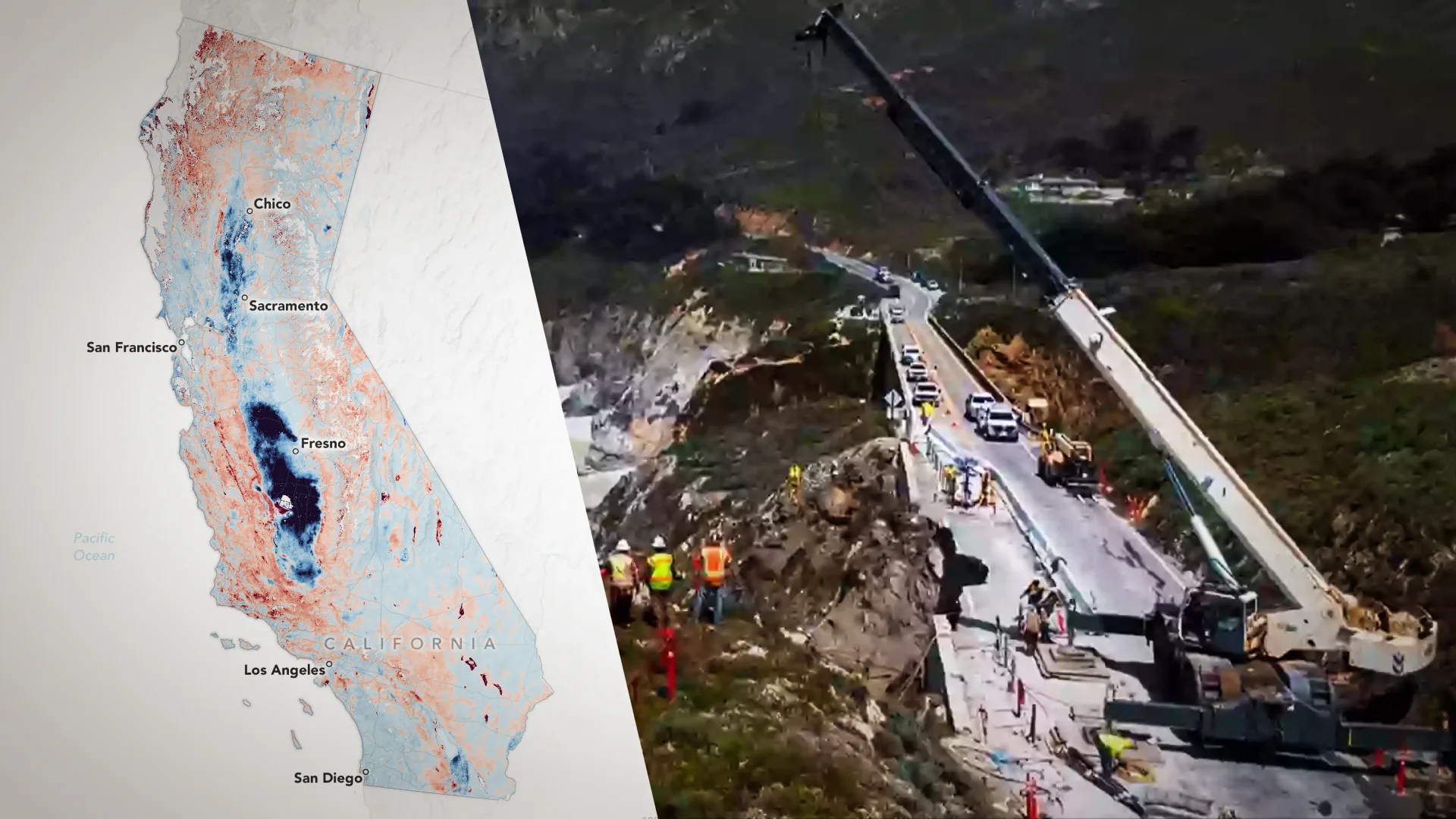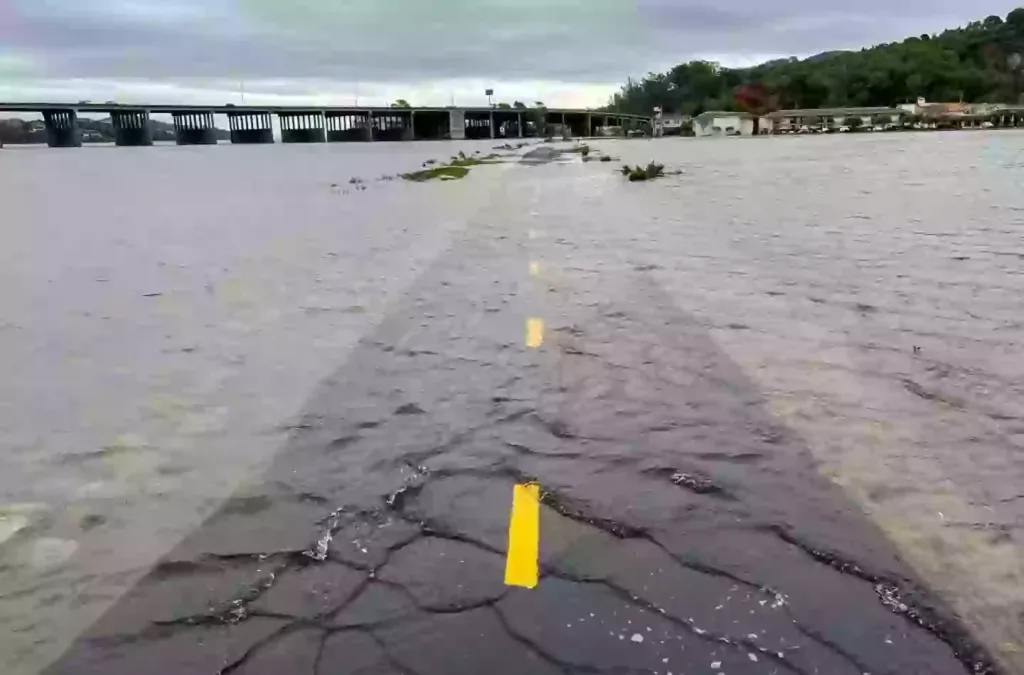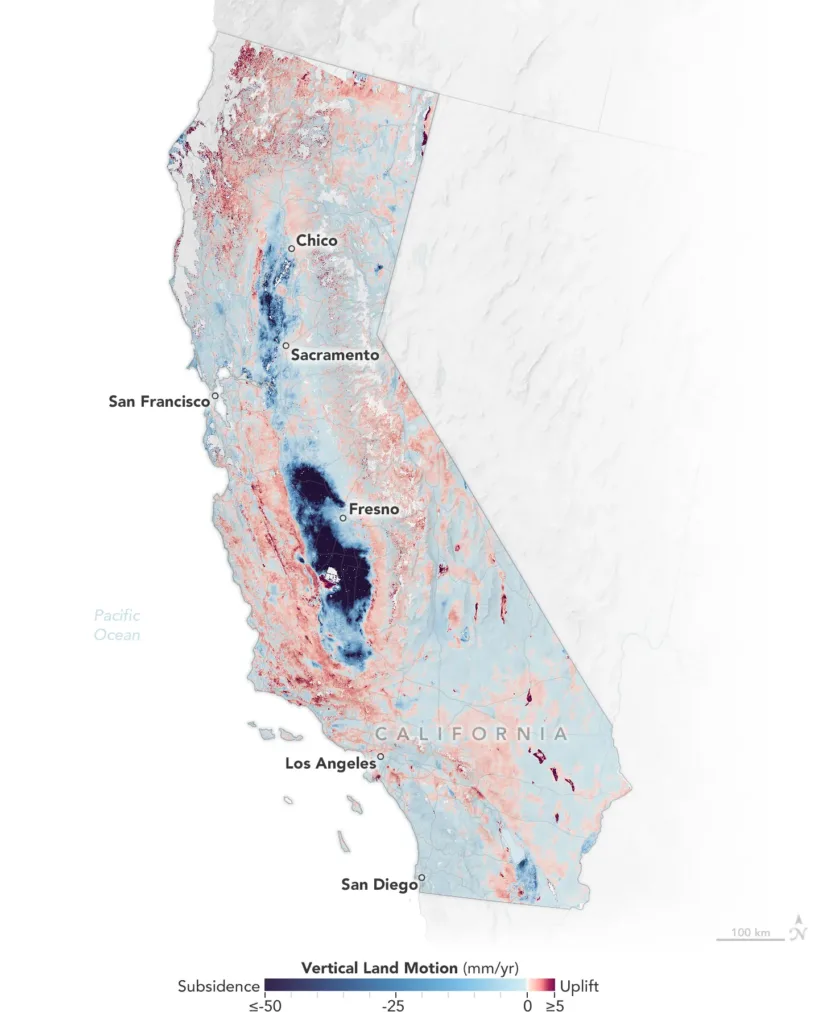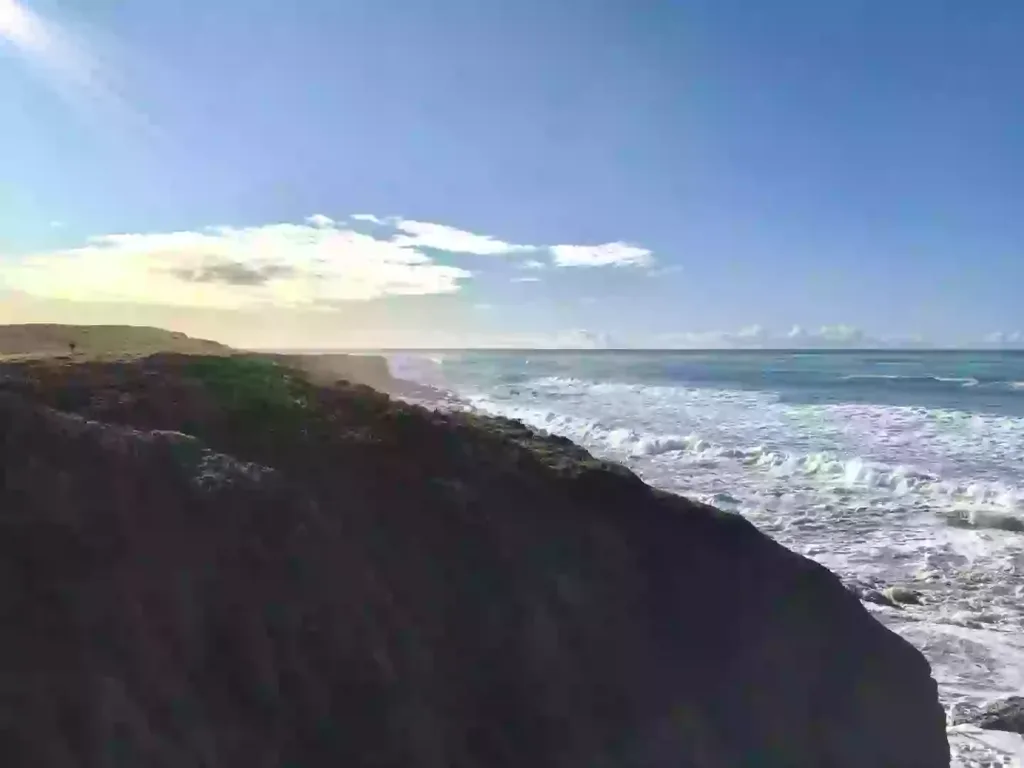NASA Study Reveals the Chilling Reality: 40 Million People in the US at Risk as Cities Sink into the Ocean

California’s Land is Sinking Faster Than the Ocean is Rising, NASA Reports
A groundbreaking NASA study has revealed a shocking and urgent threat—parts of California are sinking at an alarming rate, accelerating the devastating impact of rising sea levels. This phenomenon, known as subsidence, occurs when the ground gradually sinks due to natural or human-caused factors, such as groundwater extraction or the compression of soft soil. When combined with the ongoing global rise in sea levels, it creates a perfect storm of coastal vulnerability, threatening millions of residents, infrastructure, and local ecosystems.
The research, spearheaded by NASA’s Jet Propulsion Laboratory (JPL), the California Institute of Technology, and the National Oceanic and Atmospheric Administration (NOAA), estimates that by 2050, sea levels could rise by as much as 17 inches (1.4 feet). However, in some areas, the land itself is sinking even faster than the water is rising, leading to a much more severe and underestimated risk of flooding and coastal erosion.

According to Marin Govorcin, a remote sensing scientist at NASA’s JPL, these findings present a stark wake-up call for policymakers, urban planners, and residents living along California’s coastlines.
“In many parts of the world, like the reclaimed ground beneath San Francisco, the land is moving down faster than the sea itself is going up,” Govorcin explained.
Without urgent mitigation and adaptation strategies, entire neighborhoods, roadways, and critical infrastructure could be permanently submerged. The study’s findings have sparked intense debates about California’s preparedness and whether current climate adaptation efforts are sufficient to protect its nearly 40 million residents from the impending crisis.
🔗 Read the full NASA study here: Science Advances – Coastal Land Sinking
California’s Fastest-Sinking Regions Identified
The research identified several hot spots of land subsidence in the San Francisco Bay Area, where the ground is sinking at a disturbingly fast rate. In some locations, subsidence is occurring at more than 0.4 inches (10 millimeters) per year, meaning these areas are becoming more vulnerable to extreme flooding, high tides, and storm surges.
🌍 The most affected locations include:
- San Rafael
- Corte Madera
- Foster City
- Bay Farm Island
These areas have already experienced flooding during high tide events, and as the land continues to sink, the impact of storm surges and king tides will become even more devastating. Scientists warn that without significant infrastructure improvements and climate adaptation measures, many of these neighborhoods could become uninhabitable within decades.
🔗 More on sea-level rise projections: NOAA’s Sea Level Rise Viewer
The study emphasizes the importance of localized monitoring, as traditional global models often fail to capture these regional variations in land motion. Many previous climate reports have relied on linear regional estimates, missing the more complex and nonlinear sinking trends now being revealed by high-resolution satellite technology.
NASA’s Data Shows the Problem is Worse Than Expected
While most climate models focus primarily on rising ocean levels, the NASA-led study highlights a critical but often overlooked factor—vertical land motion (VLM). VLM includes both uplift and subsidence, which significantly influence relative sea-level rise and the effectiveness of flood mitigation efforts.

🔬 The research, published in Science Advances, challenges the assumptions made in the widely referenced IPCC Sixth Assessment Report, which has been used to guide global climate policy.
“Regional estimates substantially understate sea level rise in parts of San Francisco and Los Angeles, projecting more than double the expected rise by 2050,” the study warns.
🚨 Key Issue: Previous models have assumed that land remains relatively stable, but this research proves that some areas are sinking at a much faster rate, increasing flood risks beyond what was previously anticipated.
🔗 Read NASA’s latest climate reports here: NASA Climate Change
These findings raise serious questions about urban planning and disaster preparedness. If subsidence continues at its current pace, seawalls and flood barriers designed using outdated models may fail much sooner than expected, leaving cities vulnerable to catastrophic flooding events.
Los Angeles & San Diego Face Even Greater Uncertainty
The situation in Los Angeles and San Diego presents even greater challenges. While sea levels are expected to rise significantly along these coasts, the subsidence issue is further complicated by human activity, particularly hydrocarbon and groundwater extraction.
🌍 Why is this happening?
- Excessive groundwater pumping depletes underground aquifers, causing the land to sink.
- Oil and gas extraction removes large volumes of fluids from beneath the surface, leading to ground compression.
- Massive urban development projects place additional pressure on unstable land.
📉 In some areas, subsidence is increasing uncertainties in sea-level rise projections by up to 15 inches per year—a staggering number that could leave cities like Los Angeles and San Diego dangerously unprepared for future flooding disasters.
🔗 Learn how coastal cities are fighting back: Climate Adaptation Strategies

Without intervention, this land movement will make it nearly impossible for engineers and city planners to predict how to build protective infrastructure, leading to greater vulnerabilities for residents and businesses.
Social Media is Talking—Here’s What People Are Saying
As news of NASA’s findings spreads, social media has exploded with discussions, reactions, and debates about the alarming implications of California’s sinking land. From Twitter to Reddit, users are expressing concern, frustration, and even fear over the future of coastal cities like San Francisco, Los Angeles, and San Diego.
📢 Here are some viral social media posts on the issue:
🚨 Twitter/X:
“California is literally sinking, and no one is talking about it! We always worried about sea level rise, but the LAND is sinking too?! 😱 #ClimateCrisis”
🔗 Read the post
🌍 Facebook Discussion:
“This is terrifying! If the projections are accurate, San Francisco and LA could be underwater in our lifetime. Are we even prepared for this?”
🔗 Join the discussion
💬 Reddit Climate Science Forum:
“NASA just confirmed what many scientists have feared for years—subsidence is a massive problem that could accelerate flooding faster than we thought. What can be done at this point?”
🔗 View thread
🌊 Instagram Post by Climate Activists:
📸 Image of submerged streets during King Tide
“This is NOT just a future problem. Parts of California are already sinking! Share this post if you think the government should take immediate action! 🚨 #CaliforniaSinking”
🔗 View on Instagram
📺 YouTube Explainer Video:
🎥 Title: “NASA Study Confirms: California is Sinking Faster Than We Thought”
“In this video, we break down NASA’s shocking report and explain how land subsidence is threatening millions of Californians. Like and subscribe for more climate updates!”
🔗 Watch here
These social media reactions highlight the urgency of the situation, as many users call for more aggressive action to address both subsidence and rising sea levels.
🔗 Stay updated with NASA’s climate research: NASA Climate Portal
What’s Next? How California Can Adapt
To combat this looming crisis, experts stress the urgent need for:
✅ Investing in large-scale coastal defenses, including seawalls and flood barriers.
✅ Stricter regulations on groundwater and hydrocarbon extraction to slow subsidence.
✅ Revising flood mitigation strategies to account for subsidence.
✅ Expanding climate adaptation funding for infrastructure upgrades.
🚨 The Takeaway: If these steps aren’t taken immediately, millions of people could be displaced due to permanent flooding and coastal destruction.
🔗 Learn how to take action against climate change: UN Climate Action Toolkit
Final Thoughts: A Race Against Time
The NASA-led study exposes a terrifying reality—California’s most iconic coastal cities could disappear underwater much sooner than previously thought. With 40 million people at risk, the question remains: Are we ready for the consequences?
Let us know your thoughts in the comments below!
🔗 Stay updated with climate news: NASA Climate Portal
📢 Share this article to spread awareness!
Featured Image Credit: Melina Mara/The Washington Post via Getty Images






